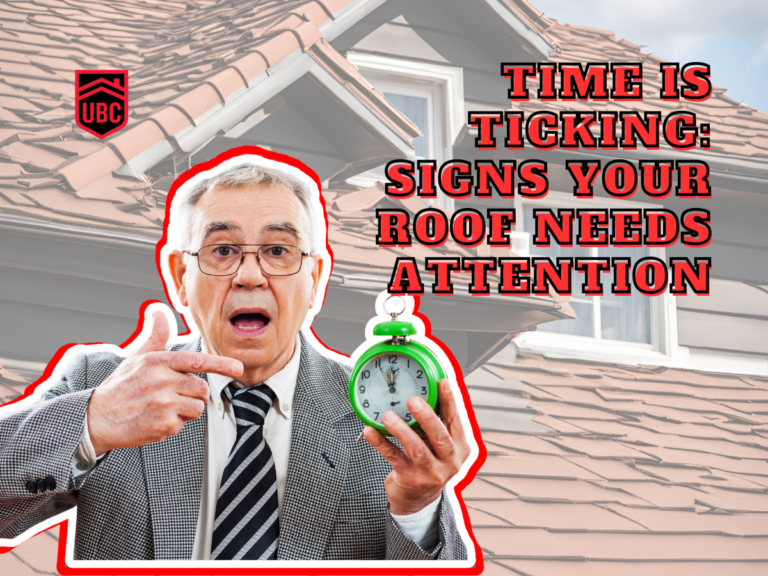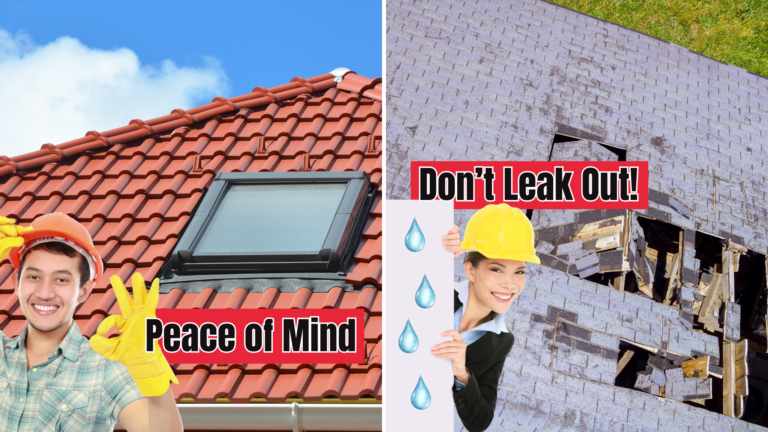Roofing's Hidden Enemies: Don't Let Unseen Storm Damage Leave Your Home Vulnerable

Many homeowners wake up to the aftermath of a storm, only to discover hidden roof damage that can compromise the safety and integrity of their homes. From shingle deterioration to flashing issues and ice dams, storms can cause a variety of unseen damages that leave your roof vulnerable to leaks and structural issues. Early detection and addressing these hidden enemies are crucial to protect your most valuable asset – your home.
The Silent Threat: Types of Hidden Storm Damage
- Shingle Damage
- Flashing Issues
- Ice Dams and Water Buildup
- Soffit and Fascia Damage
Shingle Damage
An early indicator of hidden storm damage is shingle deterioration. High winds or hail can cause cracks, curls, or missing shingles, leaving your roof vulnerable to leaks. Even if some damage is visible from the ground, it’s vital to have a professional conduct a comprehensive inspection to ensure all issues are identified and addressed promptly.
Flashing Issues
Damage to flashing, the material sealing roof penetrations, can allow water infiltration, leading to leaks and potential structural damage. Factors such as improper installation, age, or exposure to harsh elements can contribute to flashing issues. Assume that a professional roofer can assess the extent of the damage and recommend necessary repairs to safeguard your roof.
Ice Dams and Water Buildup
Shingle damage can lead to ice dams, preventing proper drainage and causing water to enter your roof deck, leading to leaks and potential mold growth. To prevent ice dams, ensure proper attic insulation and ventilation to minimize heat loss and snow melting, along with proactive snow removal after heavy snowfall. The buildup of ice dams can be detrimental to your roof’s integrity over time.
Soffit and Fascia Damage
On your roof’s overhang, damage to the soffit and fascia can expose the roof to the elements, leading to rot and potential structural issues. High winds, hail impacts, water infiltration, and pest infestations can all contribute to soffit and fascia damage. Damage to these components should be promptly addressed to maintain your roof’s integrity and prevent further issues.
Be Your Own Inspector: Signs of Potential Trouble
Exterior Inspection
One of the little things you can do to protect your home is to perform a basic exterior inspection after a storm. Get on a sturdy ladder and visually inspect your roof for missing or damaged shingles, loose flashing, and any visible cracks. Look for signs of windblown debris that may have gotten lodged under shingles. Pay close attention to shingles that are cracked, curled, or missing, as well as any flashing around chimneys, vents, and skylights.
Interior Inspection
Any signs of water intrusion after a storm should prompt you to conduct an interior inspection. Check your attic and living space for water stains on ceilings and walls, damp insulation, musty odors, and visible mold growth. Pay close attention to areas near chimneys, vents, and skylights, which are common entry points for leaks. If you notice any of these signs, it’s necessary to contact a professional roofer for a thorough inspection and necessary repairs.
Trouble signs such as water stains on your ceilings or walls, damp insulation, or a musty odor in your attic should immediately alert you to the possibility of hidden storm damage. Don’t ignore these warning signs – they could indicate potential roof issues that need to be addressed promptly to prevent further damage and protect your home.
When to Call in a Professional
Extensive Damage
Despite your efforts, if you notice widespread shingle damage, large sections of missing flashing, or signs of significant water intrusion, it’s time to call a professional. On detecting extensive damage, prompt attention is crucial to prevent further problems and safeguard your home, protecting it from structural damage, mold growth, and increased energy costs due to lost insulation.
Roof Leaks
Extensive roof leaks are a clear sign that something is wrong and requires immediate professional attention. Roof leaks can quickly lead to severe issues like structural damage to your home, mold growth, damage to your possessions, and increased energy costs. If left unattended, these problems can escalate, resulting in more extensive and expensive repairs.
Feeling Unsure
To ease your uncertainty about the extent of damage or the best course of action, it’s always best to err on the side of caution and call a professional roofer. Professional roofers have the expertise and experience to properly assess your roof’s condition and recommend the necessary repairs. If you’re unsure, don’t hesitate to seek their guidance.
Benefits of Prompt Action
Prevent Further Damage
Prevent costly repairs and safeguard your home by addressing storm damage promptly. Left unattended, even minor storm damage can worsen over time, leading to more extensive and expensive repairs. Early intervention can save you money in the long run by preventing issues such as water infiltration, structural damage, mold growth, and pest infestations.
Maintain Roof Lifespan
Promptly addressing storm damage can help you maintain the integrity and longevity of your roof. A properly maintained roof will last longer, protecting your investment and saving you money on a premature roof replacement. By keeping your roof in good condition, you can maximize its lifespan and get the most out of your roof warranty.
Another important aspect of maintaining your roof is ensuring proper ventilation and insulation to prevent issues like ice dams during winter storms. Proper insulation in your attic to minimize heat loss, maintaining adequate roof ventilation to keep the roof deck cool, and removing snow from your roof after heavy snowfall can all contribute to preserving your roof’s lifespan.
Protect Your Home’s Value
To maintain the value of your home, it’s important to address storm damage promptly. A damaged roof can significantly reduce the value of your property. Ensuring your home maintains its curb appeal and market value is crucial, especially if you plan to sell in the future. A well-maintained roof is a key selling point that can attract potential buyers and secure a higher selling price for your home.
Homes with well-maintained roofs are more attractive to potential buyers, as they signify a lower risk of immediate repairs or replacements, adding value to your property. By promptly addressing storm damage and maintaining your roof in good condition, you are not only protecting your investment but also ensuring the long-term value of your home.
Ensure Your Family’s Safety and Comfort
Damage to your roof can compromise the structural integrity of your home and expose your family to various risks, including mold growth and the elements. Taking care of storm damage promptly is important to protect your family’s safety and ensure a comfortable living environment. Don’t wait for the problem to worsen before contacting a professional, as leaks can quickly lead to more severe issues and potential hazards for your family.
Ensure your family’s safety and comfort by addressing storm damage promptly and effectively. By taking proactive measures to maintain your roof’s integrity and prevent further damage, you can create a secure and comfortable living environment for you and your loved ones.
Common Mistakes Homeowners Make
Ignoring Minor Damage
Many homeowners make the mistake of ignoring minor storm damage to their roofs, thinking it’s not a big deal. However, even small cracks or missing shingles can lead to more significant issues like leaks and mold growth if not addressed promptly.
Delaying Repairs
For some homeowners, delaying repairs to storm-damaged roofs can seem like a cost-saving measure. However, putting off repairs can actually lead to more extensive and expensive damage in the long run. Leaks and structural issues can worsen over time if left unresolved.
Delaying repairs may seem like a temporary solution, but it can result in more significant problems down the line, potentially costing you more in repairs and putting your home at risk. Addressing storm damage promptly is crucial for maintaining the integrity and longevity of your roof.
Not Inspecting the Roof Regularly
Inspecting your roof regularly is crucial to catch hidden storm damage early. Many homeowners neglect this crucial step, only noticing issues when they become severe. By conducting routine inspections, you can identify and address minor damage before it escalates into major problems.
To ensure the longevity and safety of your roof, make it a point to inspect it regularly, especially after storms. Catching damage early can save you time, money, and stress in the long run.
Don’t Let Storm Damage Compromise Your Home: Protect Your Roof with UBC
Early detection and addressing storm damage are crucial for maintaining the integrity and longevity of your roof. By understanding the different types of hidden storm damage and being proactive in your inspection, you can prevent costly repairs and safeguard your most valuable possession – your home.
If you suspect your roof has suffered storm damage, don’t hesitate to contact United Building Contractors (UBC) at 952-800-ROOF (7663) for a free roof replacement estimate. Our team of experienced professionals will thoroughly inspect your roof and provide expert recommendations to restore its integrity and protect your home. You can also use our instant estimate tool on our website to get started.
FAQ
Q: What are the common types of hidden storm damage to watch out for on your roof?
A: Common types of hidden storm damage include shingle damage, flashing issues, ice dams and water buildup, and soffit and fascia damage. These can leave your roof vulnerable to leaks and further structural problems.
Q: How can I inspect my roof for potential storm damage after a weather event?
A: You can perform a basic inspection yourself by visually checking for missing or damaged shingles, loose flashing, and signs of water intrusion both on the exterior and interior of your home. Look for water stains, musty odors, and visible mold growth as potential indicators of hidden damage.
Q: When should I call a professional roofer for help with storm damage to my roof?
A: It’s advisable to call a professional roofer if you notice extensive damage, roof leaks, or if you’re unsure about the extent of the damage. Prompt action is crucial to prevent further issues and safeguard the structural integrity of your home.







